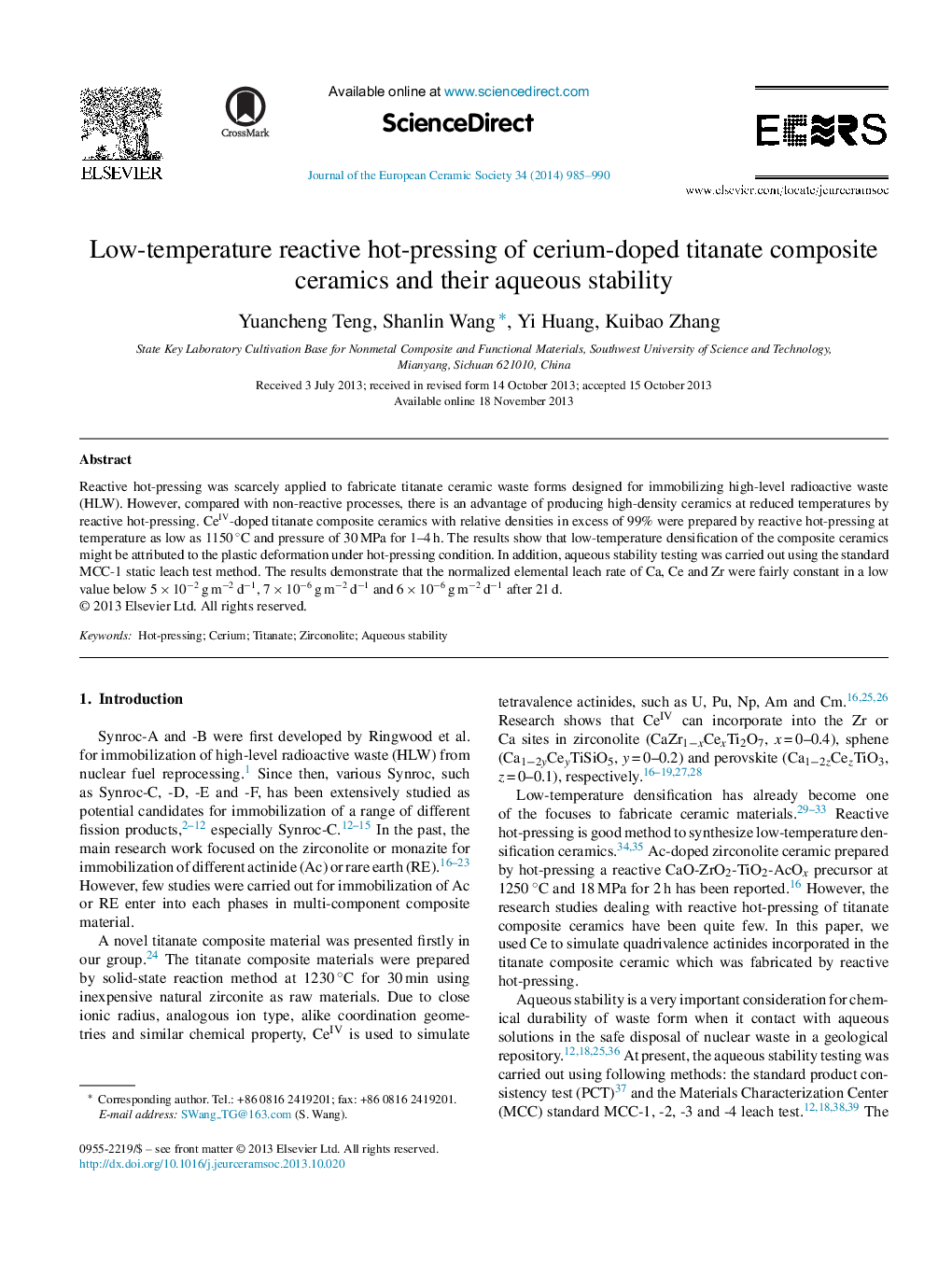| Article ID | Journal | Published Year | Pages | File Type |
|---|---|---|---|---|
| 1475039 | Journal of the European Ceramic Society | 2014 | 6 Pages |
Reactive hot-pressing was scarcely applied to fabricate titanate ceramic waste forms designed for immobilizing high-level radioactive waste (HLW). However, compared with non-reactive processes, there is an advantage of producing high-density ceramics at reduced temperatures by reactive hot-pressing. CeIV-doped titanate composite ceramics with relative densities in excess of 99% were prepared by reactive hot-pressing at temperature as low as 1150 °C and pressure of 30 MPa for 1–4 h. The results show that low-temperature densification of the composite ceramics might be attributed to the plastic deformation under hot-pressing condition. In addition, aqueous stability testing was carried out using the standard MCC-1 static leach test method. The results demonstrate that the normalized elemental leach rate of Ca, Ce and Zr were fairly constant in a low value below 5 × 10−2 g m−2 d−1, 7 × 10−6 g m−2 d−1 and 6 × 10−6 g m−2 d−1 after 21 d.
